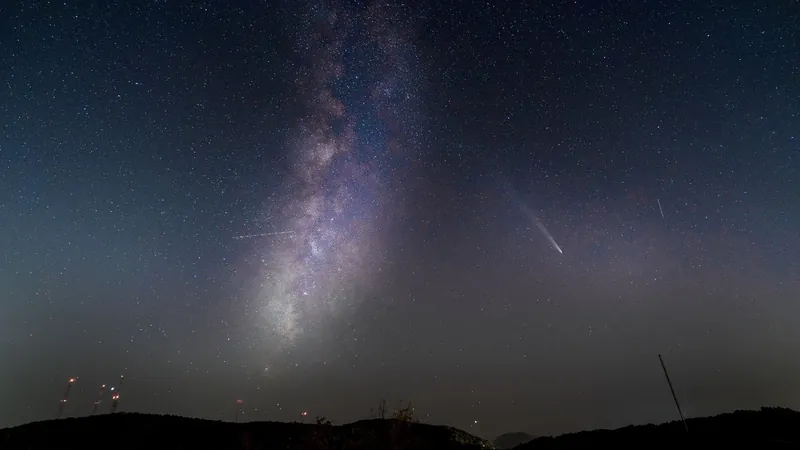
Get Ready for the 'New Year Comet': What to Expect from Comet ATLAS (C/2024) G3
2024-12-30
Author: Wai
Countdown to a Celestial Event
Mark your calendars for the second week of 2025, because the skies are about to get a dazzling new visitor! Comet ATLAS (C/2024) G3 is gearing up for a close encounter with the Sun, and astronomers are buzzing with anticipation.
Perihelion Approaches
This icy wanderer, which is set to reach its closest approach to the Sun, or perihelion, on January 13, 2025, will come within a mere 8.3 million miles (approximately 13.5 million kilometers) of our star. For perspective, Mercury, the innermost planet, orbits at a distance of around 29 million miles (47 million kilometers) at its closest. Interestingly, January 13 will also see the comet at its brightest as it nears Earth.
A Spectacle of Light
Expect to witness a spectacular show, as comet C/2024 G3 could potentially shine with a magnitude of -4.5—comparable to the brightness of Venus! However, it’s important to note that this cosmic spectacle will primarily be visible to viewers in the Southern Hemisphere. Drawing attention in the constellation Sagittarius, this might just be the brightest comet of 2025.
Survivability Concerns
But there’s a catch! The comet's close encounter with the Sun raises questions about its survivability. According to Nick James, director of the British Astronomical Association's comet section, while G3 has ventured through the inner solar system before—about 160,000 years ago—it's uncertain if it will make it through this perihelion unscathed. "It will be strongly heated and may not survive," he cautions. However, if it emerges intact, it could reward observers with a breathtaking sight in the evening sky.
Viewing Conditions
Viewing conditions may be tricky, as the bright moon will be playing its part during this celestial event. In the evenings leading up to the full "Cold Moon" on January 13, it will rise in the east, potentially dimming visibility. Thankfully, the moon will rise about 50 minutes later each night post-full moon, gradually enhancing conditions for catching glimpses of the comet.
A Once-in-a-Lifetime Experience
For all you stargazers out there, this is not just a comet sighting; it's a once-in-a-lifetime experience! But heed the warning—observing this cosmic phenomenon, especially with its proximity to the Sun, is best left to seasoned astronomers. So be prepared, and keep your eyes on the skies for what could be an unforgettable celestial show as Comet ATLAS dances through our solar system!



 Brasil (PT)
Brasil (PT)
 Canada (EN)
Canada (EN)
 Chile (ES)
Chile (ES)
 Česko (CS)
Česko (CS)
 대한민국 (KO)
대한민국 (KO)
 España (ES)
España (ES)
 France (FR)
France (FR)
 Hong Kong (EN)
Hong Kong (EN)
 Italia (IT)
Italia (IT)
 日本 (JA)
日本 (JA)
 Magyarország (HU)
Magyarország (HU)
 Norge (NO)
Norge (NO)
 Polska (PL)
Polska (PL)
 Schweiz (DE)
Schweiz (DE)
 Singapore (EN)
Singapore (EN)
 Sverige (SV)
Sverige (SV)
 Suomi (FI)
Suomi (FI)
 Türkiye (TR)
Türkiye (TR)
 الإمارات العربية المتحدة (AR)
الإمارات العربية المتحدة (AR)